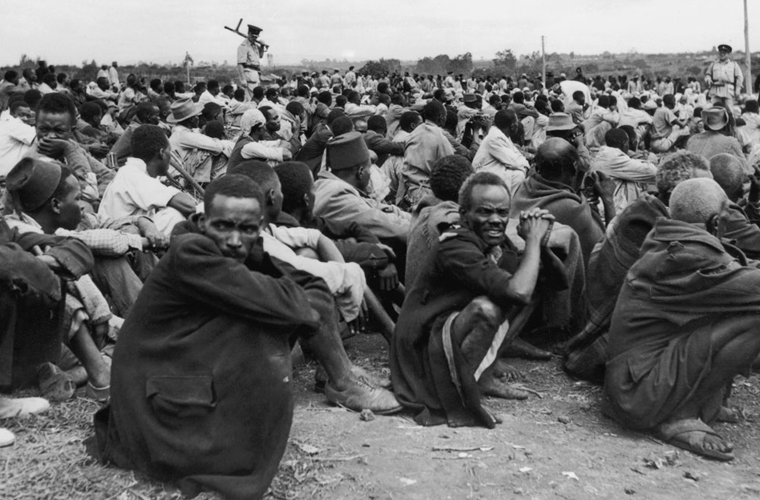The Mau Mau movement in Kenya was a significant nationalist armed peasant revolt against the British colonial state and its policies, as well as its local supporters. The movement was predominantly made up of the Kikuyu ethnic group in Central Province, with some representation from the Embu, Kamba, and Meru ethnic groups. Additionally, there were individual members from the Luo, Luyia, and Maasai ethnic groups who participated in the revolt.
The Mau Mau guerrillas were primarily young men and landless peasants. Many had lost land to corrupt chiefs and other “landed gentry” in Central Province, while others were victims of land appropriation for European settlement. The ranks of the guerrillas were also fueled by repatriated African squatters from white farms in the Rift Valley, as well as economically desperate and unemployed Kikuyu in urban areas.
The movement’s radical political posture was symbolized by taking the oath of unity with and allegiance to the Mau Mau movement. This oath, administered at Kiambu in 1950, aimed to inject courage into the initiates and was later replaced by the Batuni oath, marking a further radicalization of the movement. The declaration of a state of emergency in October 1952 prompted the Mau Mau to launch an armed revolt, demanding Kenya’s political independence from Britain.
The principal causes of the revolt were both economic and political. The scarcity of land, particularly in Central Province, remained a major grievance against the colonial government and white settlers. The Mau Mau sought fertile land as a means to achieve economic welfare and prosperity for African families. Additionally, they demanded expanded opportunities in education, training, housing, and employment.
The Mau Mau movement’s political objectives aligned with those of the mainstream political independence party, the Kenya African Union (KAU). Both sought political freedom (Uhuru) and the restoration of African dignity. Despite KAU’s political agitation, significant victories were not achieved, leading to a ban in 1953.
The Mau Mau movement remains unique as one of the only major nationalist revolutionary movements led almost entirely by peasants, many of whom were illiterate. The movement lacked external sources of political or material support and had no propaganda machinery to spread its message beyond Central Province. The British government launched a harsh propaganda campaign against Mau Mau and Kenyan nationalism, portraying the revolt as irrational and a reversion to primitive savagery. This image persisted for years, reinforced by Western media stories and novels that echoed official propaganda.
From 1952 to 1956, the Mau Mau guerrillas operated from the forests of Mount Kenya and the Aberdares, fighting with courage and determination against the combined forces of the colonial government’s army, British troops, and the Home Guards. Dedan Kimathi, one of the most celebrated leaders of the Mau Mau, sought to establish unity among the guerrilla units but was ultimately unsuccessful. In response to the revolt, the British government undertook a rehabilitation campaign in Central Province to defeat radicalism and reinforce the power of conservative Kikuyu “landed gentry” and Home Guards. The campaign aimed to get detained Kikuyu to renounce the Mau Mau and its radicalism through Christian religious indoctrination.
Although defeated militarily, the Mau Mau revolt forced the British government to undertake immediate political reforms. These reforms included reinstating African political parties in 1955 and promulgating constitutional reforms that eventually led to Kenya’s political independence on December 12, 1963.

